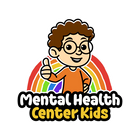A recent study published in the journal Children reviewed the effectiveness of diaphragmatic breathing (DB) as a complementary therapy to manage stress in children and adolescents aged 6 to 18 years.
Although kids use different ways to manage stress, like talking to a counselor, relaxing their muscles, exercising, or listening to music, few studies have added diaphragmatic breathing (DB) to these methods. To learn more, researchers looked at studies from 2010 to October 2024.
Even in healthy kids, DB reduced stress, anxiety, and depression. Overall, DB made a positive difference for both physical and mental health. It may be a great tool to use at school or in clinics to help kids manage stress.
Understanding the Research
The goal of this study was to evaluate whether diaphragmatic breathing (DB) can be an effective and complementary therapy for managing anxiety and depression as part of stress management programs for children and adolescents aged 6 to 18 years.
To find answers, the researchers looked at many scientific studies. They searched online medical databases like PubMed and Cochrane Library. The team chose studies that were real experiments, like clinical trials or randomized controlled trials.
Some studies included kids who were overweight, some had healthy kids, and others looked at kids who were sick or nervous about going to the doctor or dentist.
These were the specific findings:
-
Obese children - DB combined with relaxation and guided imagery reduced anxiety and depression, and improved BMI, internalizing or externalizing behaviors, and school performance.
-
Healthy children and teens - DB used with video games, virtual nature, progressive muscle relaxation, and music or wind instrument programs reduced perceived stress, anxiety, and depression. It also improved school and athletic performance.
-
Pediatric patients - DB used during dental procedures reduced anxiety, fear, and pain. Moreover, pinwheel and bubble blower breathing (play-based) were more engaging and effective for younger kids due to distraction.
Practical Strategies for Parents and Caregivers
So, how can you use diaphragmatic breathing at home or in your daily routine with your child? Here are three simple strategies to try:
Make it playful
Young children learn best through play, so turn diaphragmatic breathing into a fun activity. Try blowing bubbles or using a pinwheel — both require slow, steady exhales that naturally engage the diaphragm. If you have an older child, you can introduce apps or interactive breathing games to keep things engaging.
Check out this handout with 10 different breathing exercises for kids.
Create a routine
The key to making deep breathing effective is consistency. You may set aside 5 minutes a day — ideally during a predictable transition, like before school, after homework, or at bedtime. This technique helps your child associate breathing with feeling calm and in control.
Pair it with calming visuals or sounds
Some children respond better when breathing exercises are paired with soothing sights or sounds. Try playing gentle ocean waves, rainforest sounds, or soft music in the background.
You can also guide them to close their eyes and imagine blowing a leaf across a lake or filling up a balloon with each breath.
The authors say deep breathing is so helpful that it should be part of everyday life for all kids and teens.
Want to put this research into practice? Here’s our collection of Stress Management and Self-Care Worksheets. These tools make it easier to teach calming strategies.





















































